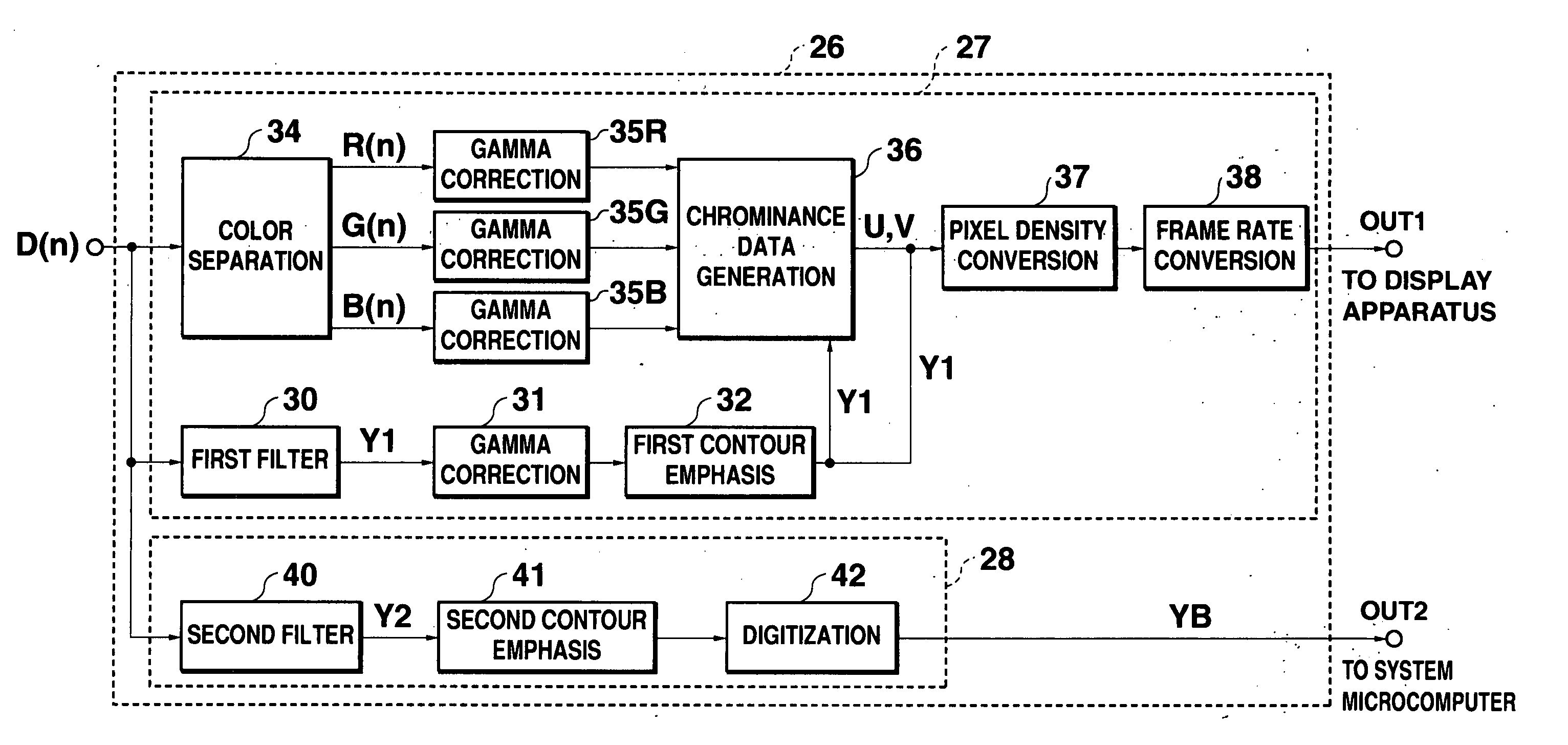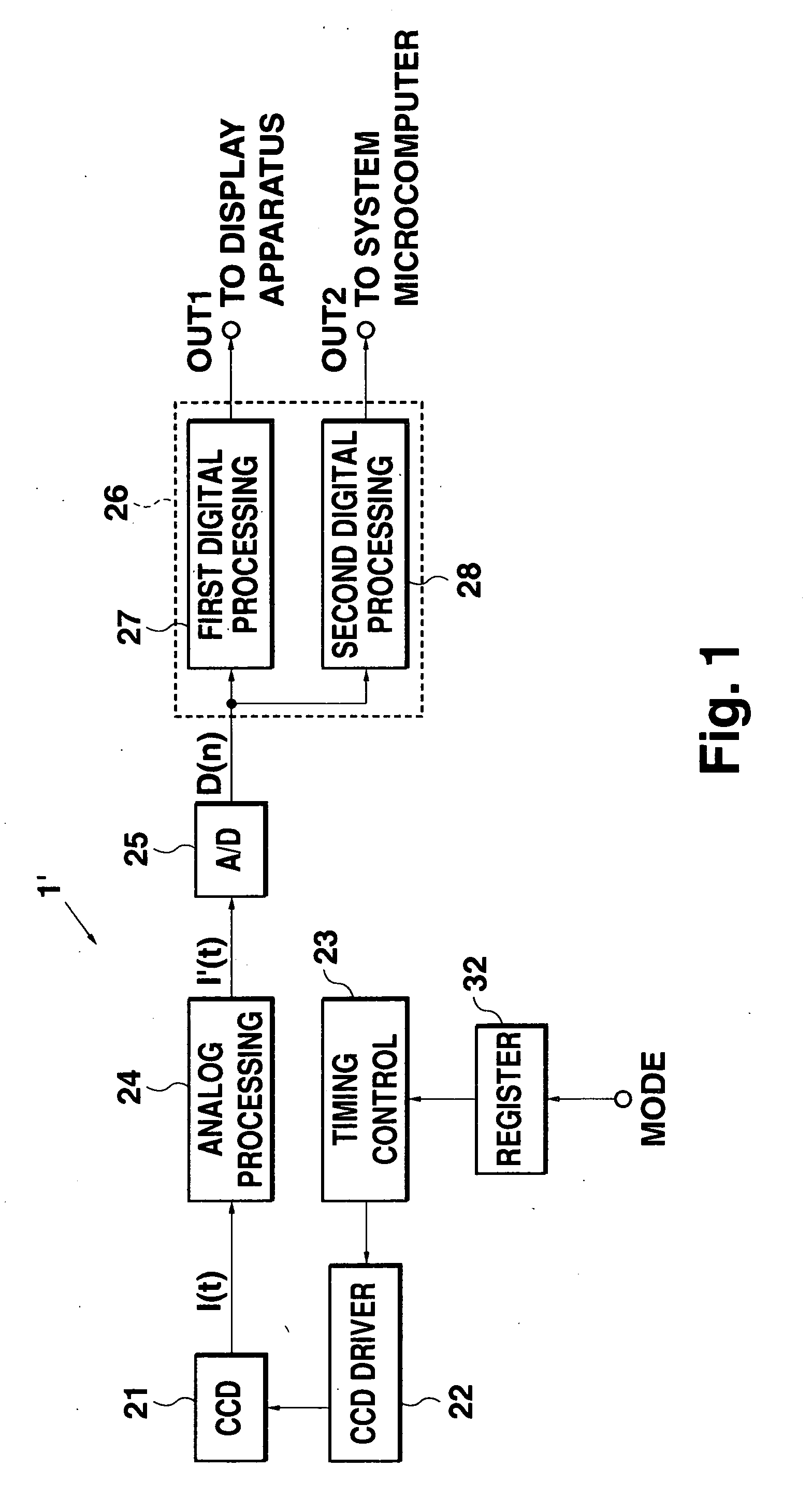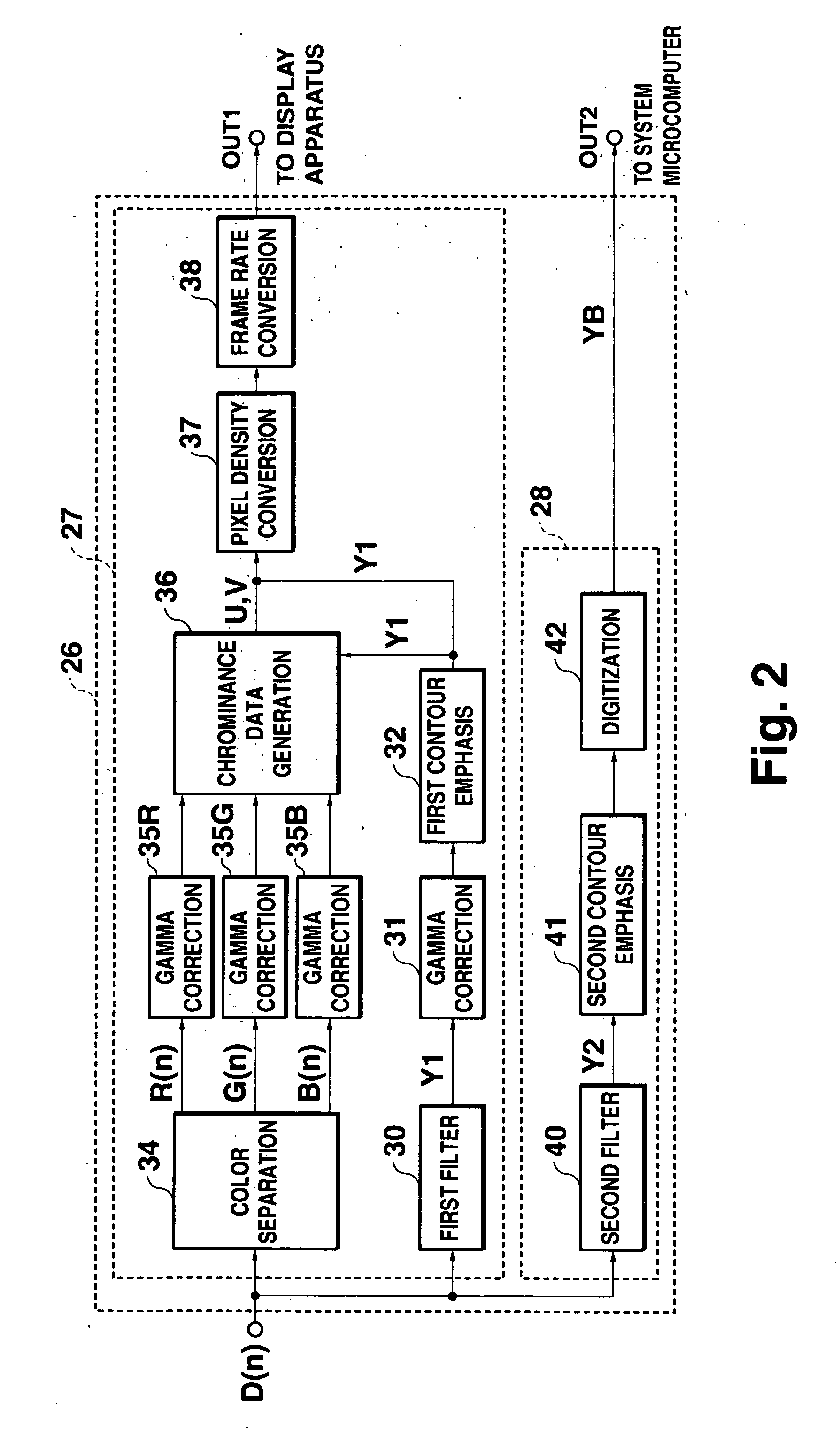Image data processing apparatus
a technology of image data and processing apparatus, which is applied in the field of image data processing apparatus, can solve the problems of inability to achieve the rate required for barcode analysis processing, increase the amount of data which must be output, and degradation of barcode analysis accuracy, so as to increase the amount of image data to be output from the imaging apparatus 1 and the effect of increasing the amount of tim
- Summary
- Abstract
- Description
- Claims
- Application Information
AI Technical Summary
Benefits of technology
Problems solved by technology
Method used
Image
Examples
first embodiment
[0026]FIG. 1 is a block diagram showing the configuration of the present invention. In FIG. 1, similarly as in FIG. 11, a system microcomputer 3 for executing barcode analysis processing and a display apparatus 2 for displaying a reproduced image are shown as example external apparatuses, and an imaging apparatus for use in a barcode reader system including those components is employed as an example for describing the present invention.
[0027] The imaging apparatus 1′ shown in FIG. 1 includes a CCD image sensor 21, CCD driver 22, timing control circuit 23, register 32, analog processing circuit 24, A / D converter circuit 25, and digital processing circuit 26.
[0028] The CCD image sensor 21 comprises a light-receiving section including a plurality of light-receiving pixels arranged in an array, for accumulating information charges in accordance with an object image. The CCD image sensor 21 further comprises a transfer section for sequentially transferring, in units of one line, the inf...
second embodiment
[0053]FIG. 7 is a block diagram showing the configuration of the digital processing circuit 26 of the In FIG. 7, elements that are identical to those in FIG. 2 are labeled with the same reference numerals, and explanation of those elements will not be repeated.
[0054] After the 8-bit data composed of the first luminance data Y1 or the chrominance data U or V has been subjected to frame rate conversion in the frame rate conversion circuit 38, the synthesizing circuit 70 acquires data of the four high-order bits of the 8-bit data and data of the four low-order bits of the 8-bit data. The synthesizing circuit 70 also acquires the 1-bit digitized data YB. The synthesizing circuit 70 synthesizes the acquired data, and outputs the synthesized data as the output data D(o). The synthesizing circuit 70 comprises a selector 71, and, among the three input data sets, the data of the four low-order bits of the first luminance data Y1 or the chrominance data U, V, and the digitized data YB are re...
PUM
 Login to View More
Login to View More Abstract
Description
Claims
Application Information
 Login to View More
Login to View More - R&D
- Intellectual Property
- Life Sciences
- Materials
- Tech Scout
- Unparalleled Data Quality
- Higher Quality Content
- 60% Fewer Hallucinations
Browse by: Latest US Patents, China's latest patents, Technical Efficacy Thesaurus, Application Domain, Technology Topic, Popular Technical Reports.
© 2025 PatSnap. All rights reserved.Legal|Privacy policy|Modern Slavery Act Transparency Statement|Sitemap|About US| Contact US: help@patsnap.com



